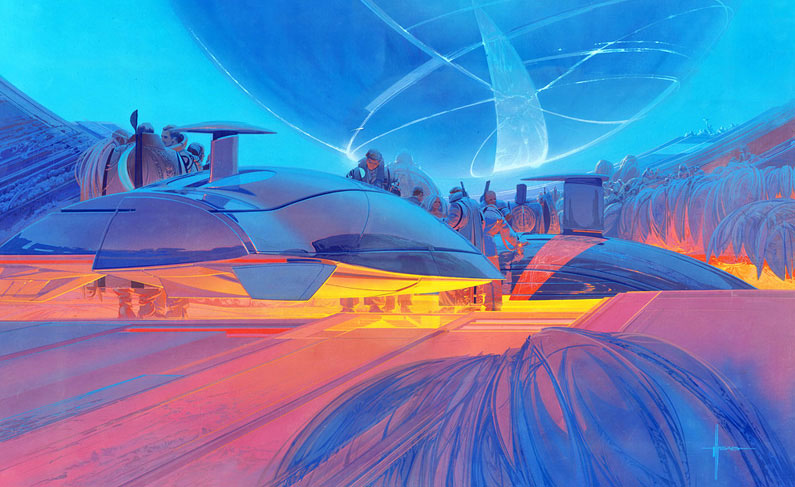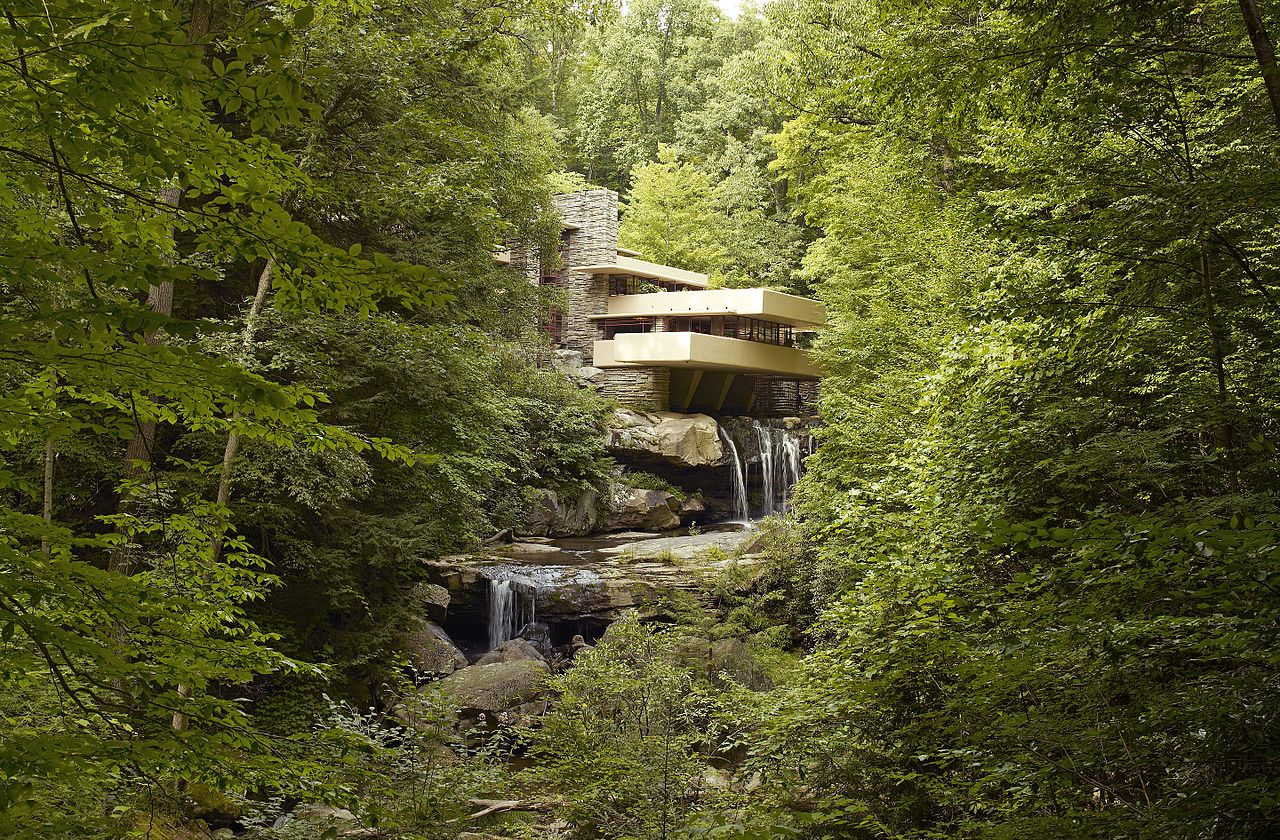Futurists & realists
As a kid I was big into science fiction. The allure of imaginary futures and distant planets was irresistible and I devoured every book I could get my hands on, eager to be transported into a world so radically different than ours.
When browsing through all the pulp fiction at my local secondhand bookstore, a factor almost as important as the book itself was the cover art. A good cover could help sell the most mediocre dross and it was also a vital way of setting the stage for the story that was to unfold. The artists that owned this domain became a fascination for me. Their work often spanned from book covers, to concept art for movies, and even computer games. Their imaginations and images strongly influenced the idea of what “the future” meant for me and an entire generation.
The first time I encountered Syd Mead’s artwork was – I think – on the cover of a 1993 computer game called CyberRace. Prior to this he’d had a storied career which I was entirely ignorant of: producing concept art for seminal films such as Blade Runner, Aliens, and Tron, as well as a wealth of conceptual product design for companies like Sony, Honda, and Bandai.

His sprawling, gritty techno-metropolises and hyper-sleek spacecraft have been etched into the consciousness of half the world, and have subconsciously set the tone for the future that we expect to live in. He is a self-proclaimed futurist, one that sets a powerful vision for what our cities could be like if humanity is just inventive and crazy enough. What he creates is based largely on impossibilities – sure, it looks feasible enough, but how those epic arches, delicately hovering platforms and blindingly shiny patinas could be realised isn’t really his concern. His aim is to show what could be, not what we can build right now.
Later in my teens, I developed a fascination with architecture, and in particular the work of Frank Lloyd Wright. Here was the diametric opposite of a futurist – someone grounded in creating real things, things that people could walk through in the real world, things that needed to be built. But things that were still beautiful, and functional, and magnificent.
Wright was a master of the materials with which he worked, from glass to concrete. He intimately understood their strengths and weaknesses, and how he could tailor them towards a certain outcome in his creations. He even received patents for building materials that he invented in order to realise a particular architectural style.

For me, there is no greater realist than Frank Lloyd Wright. That is not to deny him his creativity – he was undeniably one of the most creative people of the 20th Century. (Not only in architecture, but from furniture design to fashion, too.) But his understanding of how to create something for the now – to realise something unique with what was available – defines him as a wonderfully realistic person to me.
Frank Lloyd Wright’s body of work is an inspirational legacy that has influenced all architecture that has come after it. Syd Mead’s work is an aspirational vision that will continue to shape the dreams of creators well into the distant future. They are both fantastically influential but they approach(ed) their work from different ends of the spectrum.
In design we often argue over whether it’s better to create work that is innocently naïve or fastidiously well-informed. Should designers code? Should they learn business? Should we write copy?
Mastery of materials is a valuable thing to have. It will help you build what’s needed now and forge ahead into the near future. But vision is also valuable – it helps inspire and drive teams, and lays out a longer term future that can alter the path of humanity. What I take from the futurists and the realists is that there’s a place for every person and every process; what you need to do is find your own place, get comfortable, and own it.
 Cameron Adams is a co-founder and Chief Product Officer at Canva, where he leads the design & product teams and focuses on future product directions & innovative experiences. Read a bit more about him ›
Cameron Adams is a co-founder and Chief Product Officer at Canva, where he leads the design & product teams and focuses on future product directions & innovative experiences. Read a bit more about him ›